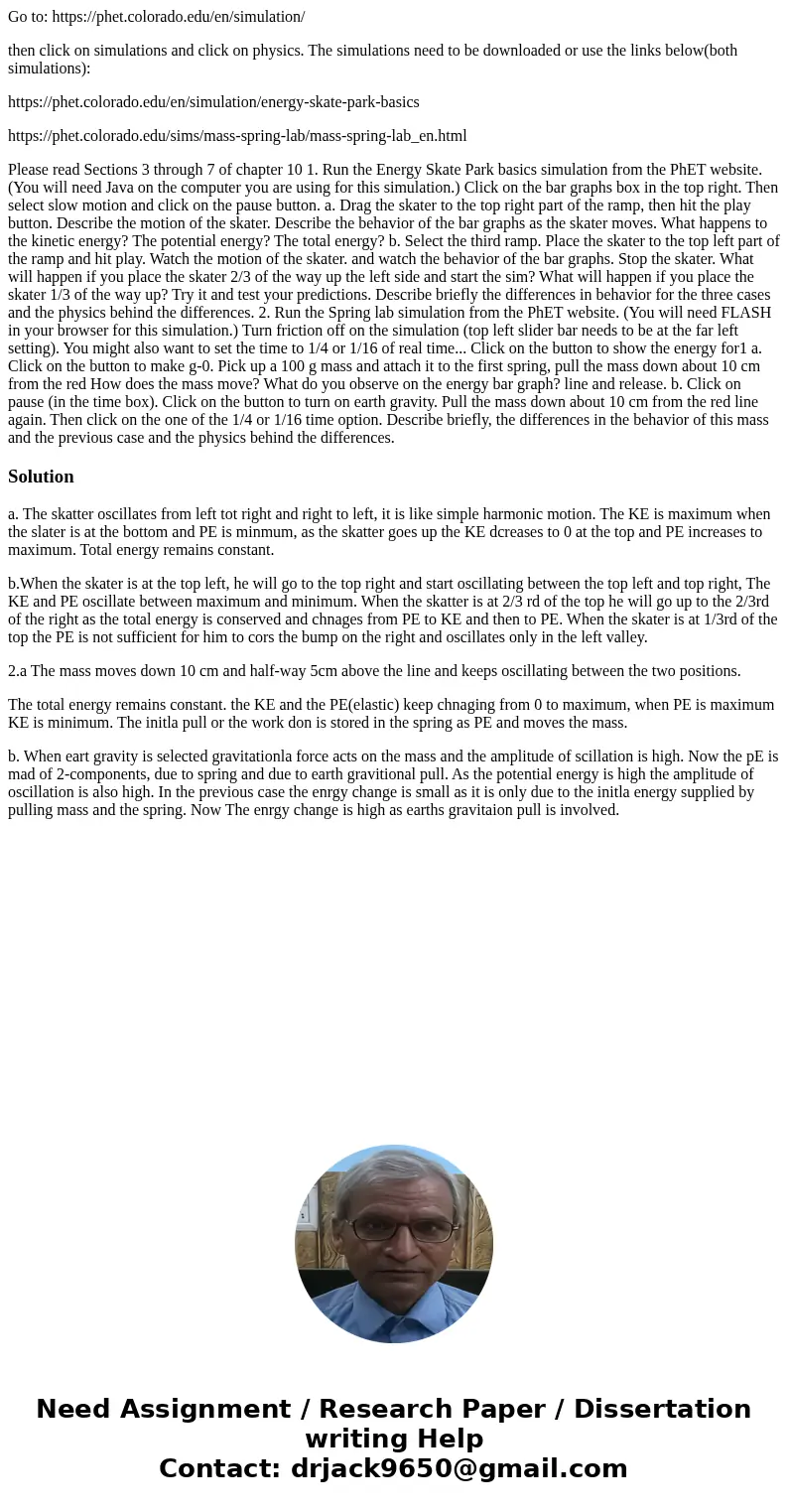Go to httpsphetcoloradoeduensimulation then click on simulat
Go to: https://phet.colorado.edu/en/simulation/
then click on simulations and click on physics. The simulations need to be downloaded or use the links below(both simulations):
https://phet.colorado.edu/en/simulation/energy-skate-park-basics
https://phet.colorado.edu/sims/mass-spring-lab/mass-spring-lab_en.html
Please read Sections 3 through 7 of chapter 10 1. Run the Energy Skate Park basics simulation from the PhET website. (You will need Java on the computer you are using for this simulation.) Click on the bar graphs box in the top right. Then select slow motion and click on the pause button. a. Drag the skater to the top right part of the ramp, then hit the play button. Describe the motion of the skater. Describe the behavior of the bar graphs as the skater moves. What happens to the kinetic energy? The potential energy? The total energy? b. Select the third ramp. Place the skater to the top left part of the ramp and hit play. Watch the motion of the skater. and watch the behavior of the bar graphs. Stop the skater. What will happen if you place the skater 2/3 of the way up the left side and start the sim? What will happen if you place the skater 1/3 of the way up? Try it and test your predictions. Describe briefly the differences in behavior for the three cases and the physics behind the differences. 2. Run the Spring lab simulation from the PhET website. (You will need FLASH in your browser for this simulation.) Turn friction off on the simulation (top left slider bar needs to be at the far left setting). You might also want to set the time to 1/4 or 1/16 of real time... Click on the button to show the energy for1 a. Click on the button to make g-0. Pick up a 100 g mass and attach it to the first spring, pull the mass down about 10 cm from the red How does the mass move? What do you observe on the energy bar graph? line and release. b. Click on pause (in the time box). Click on the button to turn on earth gravity. Pull the mass down about 10 cm from the red line again. Then click on the one of the 1/4 or 1/16 time option. Describe briefly, the differences in the behavior of this mass and the previous case and the physics behind the differences.Solution
a. The skatter oscillates from left tot right and right to left, it is like simple harmonic motion. The KE is maximum when the slater is at the bottom and PE is minmum, as the skatter goes up the KE dcreases to 0 at the top and PE increases to maximum. Total energy remains constant.
b.When the skater is at the top left, he will go to the top right and start oscillating between the top left and top right, The KE and PE oscillate between maximum and minimum. When the skatter is at 2/3 rd of the top he will go up to the 2/3rd of the right as the total energy is conserved and chnages from PE to KE and then to PE. When the skater is at 1/3rd of the top the PE is not sufficient for him to cors the bump on the right and oscillates only in the left valley.
2.a The mass moves down 10 cm and half-way 5cm above the line and keeps oscillating between the two positions.
The total energy remains constant. the KE and the PE(elastic) keep chnaging from 0 to maximum, when PE is maximum KE is minimum. The initla pull or the work don is stored in the spring as PE and moves the mass.
b. When eart gravity is selected gravitationla force acts on the mass and the amplitude of scillation is high. Now the pE is mad of 2-components, due to spring and due to earth gravitional pull. As the potential energy is high the amplitude of oscillation is also high. In the previous case the enrgy change is small as it is only due to the initla energy supplied by pulling mass and the spring. Now The enrgy change is high as earths gravitaion pull is involved.

 Homework Sourse
Homework Sourse